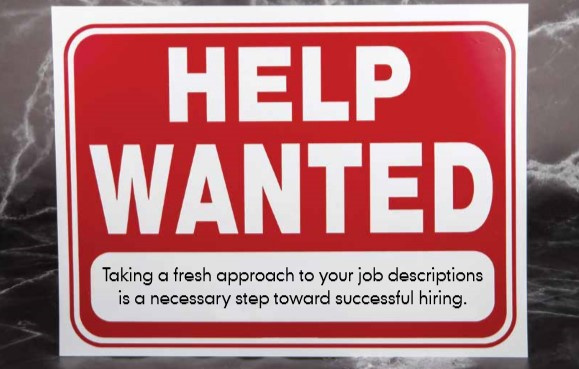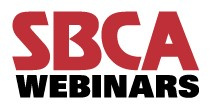Help Wanted
Help Wanted

Do children do exactly what you want them to do immediately after you ask them to do it?
If you’re a parent, you likely laugh at that question and think it’s being asked rhetorically. If you aren’t a parent, you’ve at least been a kid yourself and inherently know the answer is a certain no.
“Yet, here we are in our businesses, expecting other people’s children, complete strangers, to come in and do exactly what we want, right when we want it, just because we told them to do it,” says Dolly Penland, president and CEO of Business Results, a Predictive Index (PI) certified partner and talent optimization consultancy.
While doing a job – at its core – means accomplishing a series of tasks, Dolly’s point is that the difference between an organization’s rock stars and its bottom 25 percent has less to do with pay and more to do with the invisible factors of behavior, competency, and cognitive ability. She argues that when a component manufacturer (CM) goes to hire, they really should focus a considerable amount of effort on these areas, especially in the process of writing job descriptions and evaluating applicants.
The Intangibles
“You have to know what makes someone tick,” says Dolly. “What makes someone want to do a job? What is the difference between them just doing the job and hitting it out of the park?” She says it has everything to do with motivation.
“As an employer, if you don’t know what motivates a prospective (or current) employee, it’s likely you will not get their best work out of them. Knowledge, skills, and experience are not enough to ensure success,” says Dolly. “Behavioral and cognitive data is required to understand the whole person.” Therefore, the first step is using an objective assessment.
Dolly explains that whether you use PI, Wonderlic, or some other formal assessment tool, the key is getting data that is valid and reliable, is a good predictor of future job performance, and can be used not only to screen potential employees but also to tailor post-hire communication, bolster team building, manage performance, and increase engagement.
When an employer actively gathers data on what motivates an individual, they can then make informed decisions on whether that person will be a good fit for a particular role in the company. “For example, if you have a job that is detail-oriented and the new hire is going to be asked to work alone, that’s probably not a good fit for someone who thrives on collaborating within a team environment,” Dolly says. In other words, that disconnect between the job description and the applicant’s personality will negatively affect their motivation to exceed expectations once they’re on the job.
Worst case, Dolly says, they leave shortly after they are hired. She points out, “People don’t quit, they fire their boss!” Management failure can be a significant contributing factor in turnover. If a manager isn’t communicating effectively (i.e., they are a drill sergeant when a collaborator is needed), then the employee is going to struggle. That disconnect will lead to dissatisfaction and ultimately the employee will actually be motivated to walk away. “You need to assess your leaders, too; know their strengths and weaknesses when it comes to connecting and communicating with their teams,” says Dolly. “Where it is clear a manager’s style conflicts with those they manage, you need to coach them on how to take a different approach to improve performance.”
Act on the Data
That gets to a central argument Dolly makes to all employers. It’s not enough to do the assessment and collect the data, an employer needs to act on what the data tells them. “We want our people to be successful. We don’t want to put them in places where they are going to fail,” says Dolly. In the case of a pre-hire assessment, this can prompt employers not to hire a candidate for the job they applied for but encourage them to take a different position within the company instead.
Furthermore, when disconnects are identified among current employees, Dolly says it’s prudent to take swift action. “A mismatch in behavior, competency, or cognitive ability isn’t going to go away,” she explains. “So the sooner you make an investment in the solution the less damage or cost you will incur down the road.”
The data can also help parse out a solution to mediocrity. “Paying those who are just getting by is, in itself, a cost,” says Dolly. “When you have the information from the assessments, you don’t need to settle for just a warm body doing the work. You have what you need to either motivate them to do better in their current position, or to identify a position that is a better fit for them.”
It Starts with Job Descriptions
Ultimately, if there is a disconnect between what someone is motivated to do and what they are being asked to do, it can be traced back to a mistake at the point of hire. “We need to directly tie a candidate’s invisible qualities — their behavior, competency, and cognitive ability — to the work that needs to be done,” says Dolly. “Every job in the truss plant has a visible component and an invisible component; you need to consider both when evaluating a candidate.”
This starts with defining jobs beyond just the skills necessary to accomplish a list of tasks. “If you want that future employee to be someone who is engaged and focused, who clocks in both physically and mentally, you want the job to be a good fit,” says Dolly. “That’s only going to happen if you are clear up front about what you are hiring them to do and if they fundamentally agree that’s something they are motivated to do.”
Take a production line worker as just one example. A typical job description in the industry today focuses on a candidate’s ability to accomplish physical labor and possess a high attention to detail as well as be able to read a set of plans and do repetitive work in a fast-paced environment. “You need to define jobs beyond the explicit skills you need,” says Dolly. So instead, she suggests that same job description should focus on how the position requires individuals to work as part of team, using critical thinking to turn drawings into reality.
The description should also list the characteristics your best production employees exhibit. Are they creative? Innovative? Looking out for the safety of others? Whatever those characteristics are, work them into the job description. Not only will that increase the chances you will attract the type of person you want, it will also clearly define your expectations for them up front.
Want to learn more?
Dolly Penland presented the recent SBCA Webinar, “How to Attract, Hire, and Retain Top Talent.” SBCA members can receive a 10 percent rebate on their Year 1 subscription to the Predictive Index or CATIL software purchased through Business Results, LLC (businessresultsllc.com). The rebate will be provided as a credit on the individual member’s SBCA account and can be applied against any SBCA member purchase (e.g., products/services, education, BCMC, dues, etc.).


